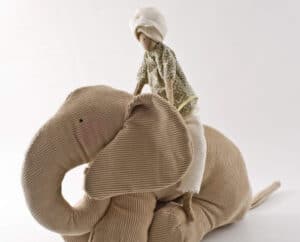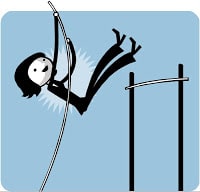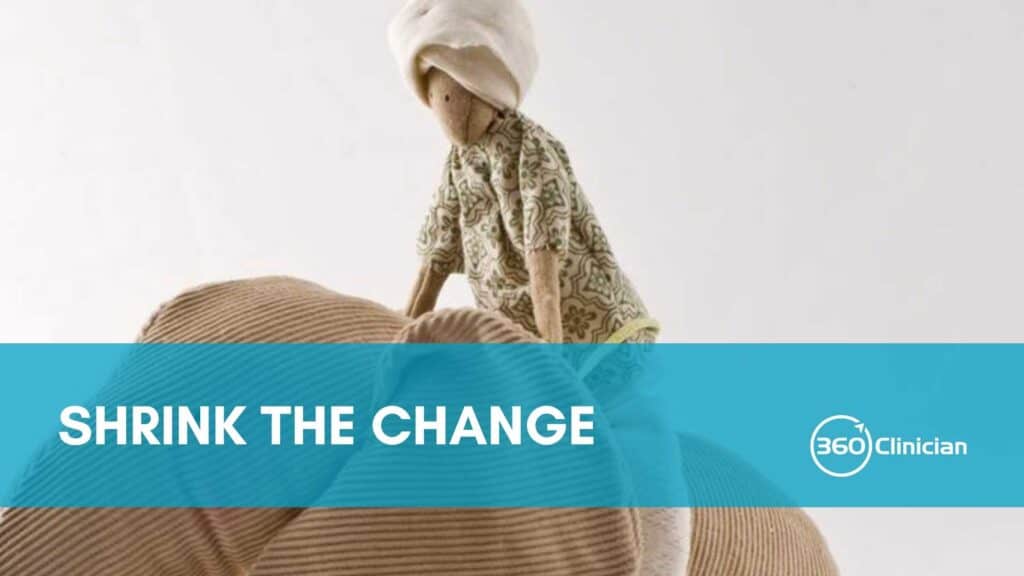In my last blog entry I talked about the reality that self-control (the much needed resource for change behaviour) is a limited resource. And so what we as therapists can perceive in our patients as resistance, laziness or discontent can really be a lack of the much needed energy to engage in change behaviour.
The Heath brothers in their book “The Switch: How to Change Things When Change is Hard” bring another key point in maneuvering through the challenging process of change.
The Elephant and the Rider

A central analogy that the authors introduce in the book is the well known mental dichotomy of the rational and emotional selves. They borrow an analogy from University of Virginia psychologist Jonathan Heidt (The Happiness Hypothesis) about the Rider and the Elephant. The Rider represents our rational self while the Elephant represents our emotional self. The rider is in a precarious position as it holds the reins to a large and often unwieldy animal.
I quite appreciate this analogy as it highlights the mismatch between the two sides. Even though the rider is in “control”, it quickly loses control if the elephant decides to ignore the reins and become distracted by an interesting shrub or a fly buzzing around his head. As the authors make painfully aware, we are all too familiar with the Elephant overpowering our Rider:
You’ve experienced this if you’ve slept in, overeaten, dialed up your ex at midnight, procrastinated…skipped the gym, gotten angry and said something you regretted….
The Heaths’ highlight that the Elephant brings the energy and drive to change initiatives. Emotion is it’s playground and that includes such positive emotions as love, compassion and forgiveness. But it has a dark side: it is inherently lazy and skittish looking for the quick pay off; it loves instant gratification. The Rider’s greatest strength is its long term focus and its ability to avoid being side tracked by distractions. On the flip side, it often can get bogged down by overthinking and analysis paralysis.
If you want to change things, you’ve got to appeal to both. The Rider provides the planning and direction, and the Elephant provides the energy…. A reluctant Elephant and a wheel-spinning Rider can both ensure that nothing changes. But when Elephants and Riders move together, change can come easily (p. 8).
Shrink the Change
All of this talk about the Elephant and the Rider sets the backdrop for understanding why it’s so important to shrink the change. The Elephant in each of us (and our patients) can be lazy and by asking too much at once we decrease the chances of successful and long term change.
As well, the authors give a number of research examples about the power of framing the change as partially completed versus starting from the beginning. As they note:
People find it more motivating to be partly finished with a longer journey than to be at the starting gate of a shorter one. (p. 127)
Instilling this sense of progress is critical as the Heaths’ explain. The Elephant in each of us can so quickly become discouraged and it needs in their words “reassurance, even for the very first step of the journey.”
Lowering the Bar

I think that the mantra “raise the bar ” has become a staple of our society’s psyche, but the Heaths argue differently. They argue that the reluctant Elephant needs to have the bar lowered. The desired change needs to be shrunk so that theElephant gets moving (p. 129).
One of the strategies they offer to shrink the change is limiting the investment of time spent on the change behaviour. They provided the example of house cleaning and that it becomes more bearable if we ask ourselves to clean for “just 5 minutes”. This helps re-assure the Elephant that it won’t be that bad and that it can handle just 5 minutes of cleaning (p. 130). I’m reminded of the now dated movie “What About Bob” with Bill Murray. He was challenged to overcome his phobias with taking baby steps. If you want a good walk down memory lane, check out the video here.
Physio Application
I think that we can agree that we often successfully shrink the change in our work with patients. We realize instinctively that giving 3 exercises as opposed to 15 will result in “better patient compliance”. But I’m wondering if there are other opportunities and strategies for incorporating this important axiom of change into our clinical practice.
I’m wondering if there are ways that we can highlight the change that the patient has already incorporated into their life so that they have the sense that they are already well on their way. I find myself often glossing over the positive steps that patients have taken in reducing their pain and focusing on what needs to happen next. As I write this, I wonder if taking a few extra minutes in a session to explore the positive action steps that a patient has taken can reinforce their change behaviour and give energy to both their Elephant and Rider.
I think this can apply to our exercise prescription and coaching. This week I caught myself highlighting how challenging a particular exercise was to the patient (I think that I have an underlying fear of giving exercises that are too easy). But what if I should focus on reinforcing the message that this exercise isn’t too difficult, that they’re already 80% of the way there.
What other ways can we help to get the Elephant moving?
Each patient that we interact with will be on a different place on the scale of motivation to change. The challenge is that the motivation for change ebbs and flows and those that start off strong can quickly get discouraged if change (often a reduction in their pain) isn’t experienced quickly enough. And then there are those that are low on motivation right from the first visit and we need to very quickly and intuitively give hope and quick success to motivate both their Rider and Elephant.
I look forward to your thoughts about new strategies and perspectives on helping motivate our patients to healthy change.

